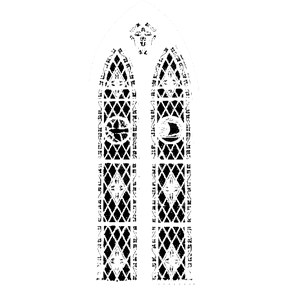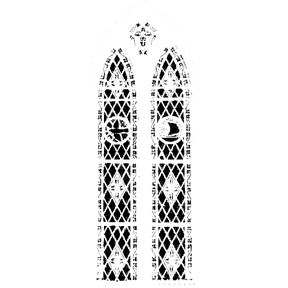Philippians 2: 5-11 (Common English Bible)
John 12: 12-16 (New Revised Standard Version, Updated Edition)
Parades are very enjoyable, are they not? When I was much younger, the Pekin 4th of July Parade always excited me. Only Christmas was more thrilling. But as I got older and that parade became much smaller the thrill is long gone. Today we read about a parade that surpassed any parade before or since. There were two parades in Jerusalem during the observance of Passover in the year 33 AD. On one side there was a militarized parade led by Roman prefect Pontius Pilate on a white horse with the armored might of Rome behind him. On the other side of Jerusalem there was Jesus, considered a heretic or even an outlaw by the ruling class. Jesus rode on a donkey, with a message of peace and love and praised by the Judean peasant class as the Messiah. The future of humankind was faced with two ideologies, the kingdom of Caesar vs. the kingdom of God.
The crowd watching Jesus was full of excitement. Passover was the major event on the Jewish calendar remembering the exodus from Egypt. And there was recent news that Jesus had raised Lazarus from death.
The context of the triumphal entry and the way John’s gospel tells it is important. First of all, when the people heard that Jesus was coming to Jerusalem, they took branches from palm trees and went out to meet Jesus. The carrying of the palm branches was a symbolic action that only John’s gospel reports. The waving of the palm branches was associated with the Jewish Maccabean revolt against the Syrian control of Israel more than a century earlier (167-163 BC).
The waving of the palms among the people at Passover observance meant they were welcoming Jesus as a national liberator who would drive the Romans out of Judea. The cries of Hosanna meant “save us,” save us from the Romans! But instead of a horse, Jesus chose a donkey to ride. The implication of a donkey to ride is that Jesus came as a king of peace. As the Hebrew prophet Hosea wrote, centuries earlier, “I will abolish the bow, the sword and war from the land.” In the aftermath of Jesus’ death and resurrection, his disciples understood Jesus was not only the peaceable king of Israel but also the king of the world who would bring peace rather than war to all. The disciples understood later that Jesus riding a donkey was in contrast to other kings who came riding on war horses and chariots, symbols of power and victory in war.
This same Jesus who will rise from the dead, is the same humble Jesus who rode on a donkey, was as human as anyone. The Word made flesh will not leave his body behind in that sealed tomb, just as he takes his divinity to the cross.
The Apostle Paul also realized that. When Paul wrote his letter to the churches in Philippi, he was in prison around 62 AD. The Philippian letter, in my opinion, was one of Paul’s most important letters. For one thing, it was one of the authentic letters written by Paul in the New Testament. It is believed these verses were written as a hymn for worship.
God’s image in Paul’s letter sets us free from our captivity by inviting us to share in Jesus’ mission on earth. Paul has a vision of God that frees us in our own vulnerability, but not away from it, and reveals God’s power as the only way that can pull us away from the addictive quest for power.
Only a humble Creator can place itself where no one would want to be, subject to abuse and bound for death, even an infamous death on a cross. God enters the depths of human vulnerability because that is the nature of the God we worship.
Now Jesus was never a literal slave. But he would die the many ways slaves died, in great agony, without mercy and without help. But symbolically, Jesus was the last slave. He entered the form of a slave to end those systems of enslavement from within. But this quiet revolution often escapes the ears of many churches. Churches throughout the centuries too often aligned a Christian obedience as a tool to refine obedience to power, from the days of the first Christian Roman Emperor Constantine in 313 AD and still today.
The exaltation of Jesus by God is the raising up of the despised, the forgotten and all those ground down under the weight of a selfish world. The crucified slave figure is to be worshiped by one’s spirit and one’s action, because when we feel oppressed by the overwhelming weight of a cruel world, God is with us. We rise up with Jesus, with his victory over death and the powers both religious and political that crucified him.
Does this victory mean a Christian imperialism, like the early Christian emperors of Rome envisioned? Christian imperialism always thrives when the story of God is imagined as a god sitting on a throne. We can see that ideology today in many parts of American Christianity. It’s called Christian Nationalism, which is the opposite of Jesus' teachings. The victory of Jesus, is not a victory over people, but a victory for and indeed the whole of creation. Confession is not not a sign of forced faith, but formed faith for those who have joined the journey of Jesus in heart, mind and action.
Paul’s letter to the Philippian believers models a different type of power, one that sets aside divine privilege to become one of the powerless (Philippians 2: 6-8). The Greek word that Paul uses in verse seven is “kenosis” which means “emptied,” describing Christ as setting aside his divinity to be in solidarity with the oppressed. The Christ refused to copy the use of violence that nearly all empires use.
Jesus’ entry into Jerusalem on a donkey highlights how he gained power by not copying the violence of Caesar, but by becoming one of those who were victimized by the powers of Caesar. Power is not necessarily the problem. How one gets power and to what end it's used is the question. To use that power to make peoples’ lives better vs. using power for the elite in the pursuit of their greed is something for American churches to ponder in the coming months.
There were two parades in Jerusalem during that Passover day in 33 AD. The question is, what parade really matches your values?
AMEN


